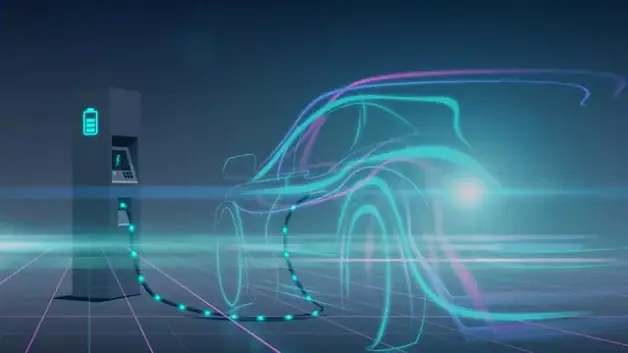
Published Date:Jan-17-2025 | Author:Saurabh Bidwai | Designation:Senior Research Associate
The Future of E – Vehicles: Wireless Charging
Lowering the total cost of ownership (TCO) has become a must-have for fleets all over the world. What happens to TCO when fleets switch to electric vehicles is the question. And, if any, what advantages does wireless charging have over plug-in charging?
Needs in the Passenger and Commercial Vehicle Sectors:
This raises the question of whether passenger or commercial cars would be a better fit for wireless charging technology? Consumer acceptance is growing, and technology standards are being defined, so it's only a matter of time before passenger vehicles are outfitted with wireless charging capabilities. Wireless charging, on the other hand, is a tempting prospect in the commercial vehicle arena and, more specifically, in last-mile delivery applications.
Why is this the case? Because it takes longer to charge, it is more likely to be more efficient for the batteries. It is more environmentally friendly because vehicle panels can use smaller batteries. It's ideal for use in areas where there's a lot of snow, which makes wired charging difficult. It's safer because there are no moving parts or pins to break or spark. It is convenient since it eliminates the need for passengers to exit their vehicles to begin charging. It will almost certainly be required for autonomy, as it implies that vehicles may park themselves to be charged.
Multiple Efficiencies Generated:
WiTricity, a global wireless charging firm, released a paper earlier this year claiming that their magnetic resonance-based wireless charging technology may cut last-mile electric vehicle (EV) fleets' TCO in half. This claim is still in the realm of theoretical feasibility at this time, as most fleets today are mixed and not all-electric. Indeed, it is unlikely that fleets would fully reap the resource and cost benefits of wireless power charging until they become all-electric.
Wireless charging's potential efficiency, on the other hand, is worth considering. Electric utility rates are now a significant cost center for electric vehicles. Regardless of regional differences, DC fast charging in most cases necessitates the payment of demand charges to utilities. These costs are supplemental fees levied by the utility on commercial customers to maintain a consistent electricity supply.
Wireless charging is being recognized in this context for the resource, cost, and operational efficiencies it allows. One of the major benefits of wireless charging is that it integrates charging into the vehicle workflow. When the car needs to be recharged, like with plug-in charging, this guarantees that the workflow is not disrupted. Wireless charging, for example, might be deployed at the dock, allowing automobiles to be charged while being loaded.
As a result, wireless charging looks to have two key advantages. To begin with, while charging takes longer, it is compensated by the fact that it becomes part of a smooth workflow. This reduces the amount of stress placed on the battery, extending its life. Second, demand charges are likely to be reduced because not everything is being powered at the same time; instead, it is being done in parallel with other activities.
Safety, Reliability, and Cost-Effectiveness of Wireless vs. Plug-in Charging:
New technologies invariably raise concerns about their safety, dependability, and expense. Wireless charging solutions will likely require high safety standards from a safety standpoint. For example, wireless systems could include foreign item detection, similar to WiTricity's approach. The mechanism detects something between the charging mat and the receiver and, if necessary, turns off.
Wireless charging is likely to offer the same level of efficiency as Level Two charging in terms of efficiency. This dispels any concerns that wireless charging is less efficient than standard plug-in charging. Also, a plug-in charger with Level Two charging is expected to offer efficiency comparable to wireless charging solutions thanks to built-in safety measures.
Wireless charging is still in its infancy and has yet to gain traction. While the hardware will likely be slightly more expensive than plug-in options, the entire cost of ownership for fleets is expected to decrease with time and ultimately more cost-effective than plug-in charging. Finally, the installation is touted as being relatively simple. Wireless also means that trip hazards such as bulky wires and cords can be removed, saving money on repair costs.
Application Areas Are Increasing:
The technology has already been tested in a variety of situations, including factories with self-driving robots and droids. Delta Electronics' industrial robots, for example, use WiTricity's licensee's wireless charging systems to charge themselves automatically. This emphasizes the autonomy argument. Another licensee, Australian Lumen Freedom, has developed charging infrastructure for a fleet of cabs in Nottingham (England), demonstrating the practicality of taxi charging. The cabs in this situation are charging while they wait in line. This increases efficiency and allows taxis to perform longer shifts.
Wireless Charging to be Pioneered by Middle-Mile Commercial Vehicles:
The next phase in the march of wireless charging, we believe, maybe middle-mile commercial vehicle applications. Meanwhile, wireless charging and DC fast charging will coexist, with wireless charging being better suited to applications where vehicles are not driven for more than 300 miles at a time.
